Non-Periodic Phenomena in Variable Stars
IAU Colloquium, Budapest, 1968
PHOTOELECTRIC RESEARCH ON FLARE STARS AT THE CATANIA
ASTROPHYSICAL OBSERVATORY
S. CRISTALDI, G. GODOLI, M. NARBONE and M. RODONO
Catania Astrophysical Observatory, Italy
SUMMARY
In this paper the results recently obtained at Catania from the observations
of the flare stars PZ Mon, YZ CMi, AD Leo, BD +55 1823, BD +51 2402
and EV Lac are summarized.
INTRODUCTION
In 1967 systematic photoelectric observations of flare stars were started
at the Catania Astrophysical Observatory.
These observations have been carried out in the course of the Catania
research programme on stellar activity of the solar type (Godoli, 1967, 1968).
Some results have already been published (Cristaldi, Rodono, 1968a;
1968b; Cristaldi, Narbone, Rodono, 1968; Godoli, 1968). Here the
observations and the results obtained until August 15, 1968 will be summarized.
OBSERVATIONS
At Catania four main instruments are available for stellar work
(Fracastoro, 1967).
1. A Newtonian-Cassegrain reflector of 91 cm aperture, 400 cm and
1400 cm focal length respectively.
2. A Schmidt quasi-Cassegrain universal reflector (41 cm aperture and
119 cm focal length in the Schmidt combination, 61 cm aperture and 600 cm
focal length in the quasi-Cassegrain combination).
3. Two Cassegrain telescopes of 31 cm aperture and 500 cm focal length,
which we discriminate by their position (N or S) in their common dome.
All these instruments are equipped for photoelectric observations with
EMI 6256 photomultiplier tubes.
The characteristics of the stars observed, the instruments and the filters
used are reported in Table 1.
For the study of the physics of the flares it is very important to carry
out three-colour photometry which due to the abrupt nature of the phenomena
is not feasible with traditional photometers. For this reason at Catania
a suitable photometer for simultaneous multi-colour photometry has recently
been completed (Cristaldi, Paterno, 1968a; 1968b). By this new apparatus
and the universal reflector used in the quasi-Cassegrain combination
observations of EV Lac and BD +55 1823 have recently been carried out.
The star YZ CMi was observed on occasion of an international optical
and radio flare patrol programme organized by Prof. Chugainov and Prof. Lovell
in two observing periods: January 22-February 6 and February 21-March 7, 1968.
Table 1
Characteristics of the observed flare stars (August, 1968) and instruments
and filters used
Coordinates (1950.0) Instrument
Flare star m_v Sp. Filters lambda equ.
R. A. D. (cm aperture)
PZ Mon 06h 43.2m +01deg 13' 9.5m K2e 30N V 5150 A
YZ CMi 07h 39.5m +03deg 48' 11.6m M4.5e 91 B 4300
AD Leo 10h 14.2m +20deg 22' 9.5m M4e 91 V 5150
BD+55 1823 16h 14.9m +55deg 32' 10.1m M1.5e 30S V 5150
BD+55 1823 61 B V 4300,5150
BD+51 2402 18h 31.6m +51deg 39' 8.3m K6e 30S V 5150
BD+51 2402 30N V 5150
EV Lac 22h 42.6m +43deg 49' 10.2m M4.5e 30S V 5150
EV Lac 61 B V 4300,5150
EV Lac 91 V 5150
Table2
Comparison stars.
Comparison star
Flare star
Star m_v Sp.
PZ Mon BD + 1 1495 9.2 K
YZ CMi - -
AD Leo BD +20 2475 9.0 K
BD +55deg 1823 BD +55 1834 9.0 K
BD +51deg 2402 BD +51 2410 7.7 K2
EV Lac BD +42 4527 8.6 M
As we were interested not only in the light curves of flares themselves
but also in the brightness fluctuations at minimum, sky and comparison stars
measurements have been performed about every 20 minutes. The comparison
stars are listed in Table 2.
The observations (m_v - m_c) versus JD_hel are corrected for atmospheric
extinction using a statistically determined mean absorption coefficient. Also
log I_flare/I_normal versus Universal Time are considered for the periods in
which flares occur. The data are reduced by the IBM 1620 computer of the
Science Faculty of Catania University.
RESULTS
The duration of patrolling in hours, the number and the characteristics
of the flares observed for each star are given in Table 3.
Up to now (August 15, 1968) during about 278 hours of the flare patrol
programme 12 flares have been observed.
Table 3
Flares observed until August 15, 1968.
Flare observed
Hours of Number of
Flare star patrol flares for Delta m rise total
(August 100 hours Epoch of max. (magn.) time duration rise speed
15, 1968) (minutes)(minutes) (magn/sec)
PZ Mon 38.2h 2.6 67/09/21 03h 40m 0.11m 0.7m 1.7m 0.003
YZ CMi 16.5h 24.2 68/02/26 21h 26m 0.24m 0.9m 7.2m 0.004
68/02/26 22h 26m 0.35m ? ? ?
68/03/01 20h 00m 0.62m 1.4m ? 0.007
68/03/03 20h 01m 0.23m 1.4m 23.3m 0.003
AD Leo 36.3h 5.5 68/03/04 02h 27m 0.08m 0.4m 10.0m 0.003
68/04/24 19h 28m 0.46m 1.4m 22.0m 0.005
BD +55 1823 25.2h 0.0
BD +51 2402 96.9h 1.0 67/07/25 01h 59m 0.07m 5.0m 12.2m 0.001
EV Lac 64.5h 6.2 67/09/27 22h 08m 0.14m 0.6m 5.5m 0.004
0.16m (first rise)
67/09/30 00h 27m 0.32m 0.6m 7.5m 0.009
67/12/29 19h 19m 0.92m 1.3m 6.7m 0.012
68/07/21 02h 24m 1.06(V) 0.5m 22.0m 0.035
02h 24m 1.12(B) 0.7m ? 0.027
TOTAL 277.6h 4.3
The light curves of the observed flares are plotted in Figs. 1-3. In Fig. 4
the simultaneous B and V measurements of the EV Lac flare observed on July
21, 1968 are plotted together with the (B-V) colour indices. The star appears
bluer just before the flare maximum. A strong reddening of 0.5m took place
during the decreasing phase.
We should notice that the two stars PZ Mon and BD +51 2402 of relatively
early type were less active than the normal M type flare stars. The
most rewarding stars have been YZ CMi and EV Lac. Naturally it is not
possible to draw a decisive conclusion on this matter from our data alone.
We notice that the first observed flare of EV Lac shows two peaks. The
structure of this flare recalls the existence of the symphathetic solar flares.
From the light curves of the flares one can see that often before a flare
starts, the star's brightness decreases gradually or abruptly by the order of
0.01m. This light variation appears to be clearly beyond the range of error.
For EV Lac, brightness fluctuations at minimum of light have been observed.
These fluctuations have an amplitude of about 0.1m and seem to be cyclic,
although we cannot give a definite period because of the discontinuity
in the observations. It is of interest pointing out that all the observed
flares of EV Lac took place during the minima of these fluctuations.
Also for BD +51 2402 small brightness fluctuations, which in this case
seem to be not periodical, have been found at the minimum.
In Fig. 5 for each flare the maximum intensity versus the ratio d/D has been
plotted, where d indicates the rising time and D indicates the total duration
of a flare. Catania and other observations have been used. It is evident that
the ratio d/D is smaller for larger flares.
One might suppose that this ratio is overestimated for flares of small
intensity, D in this case being underestimated. In order to avoid this criticism,
in Fig. 5. (on the right) the ratio d'/D' has been plotted, where the durations
now refer to the part of the flares with log I_f/I_n >= 20% (I_f/I_n)_ max.
Also in this case the relationship is confirmed.
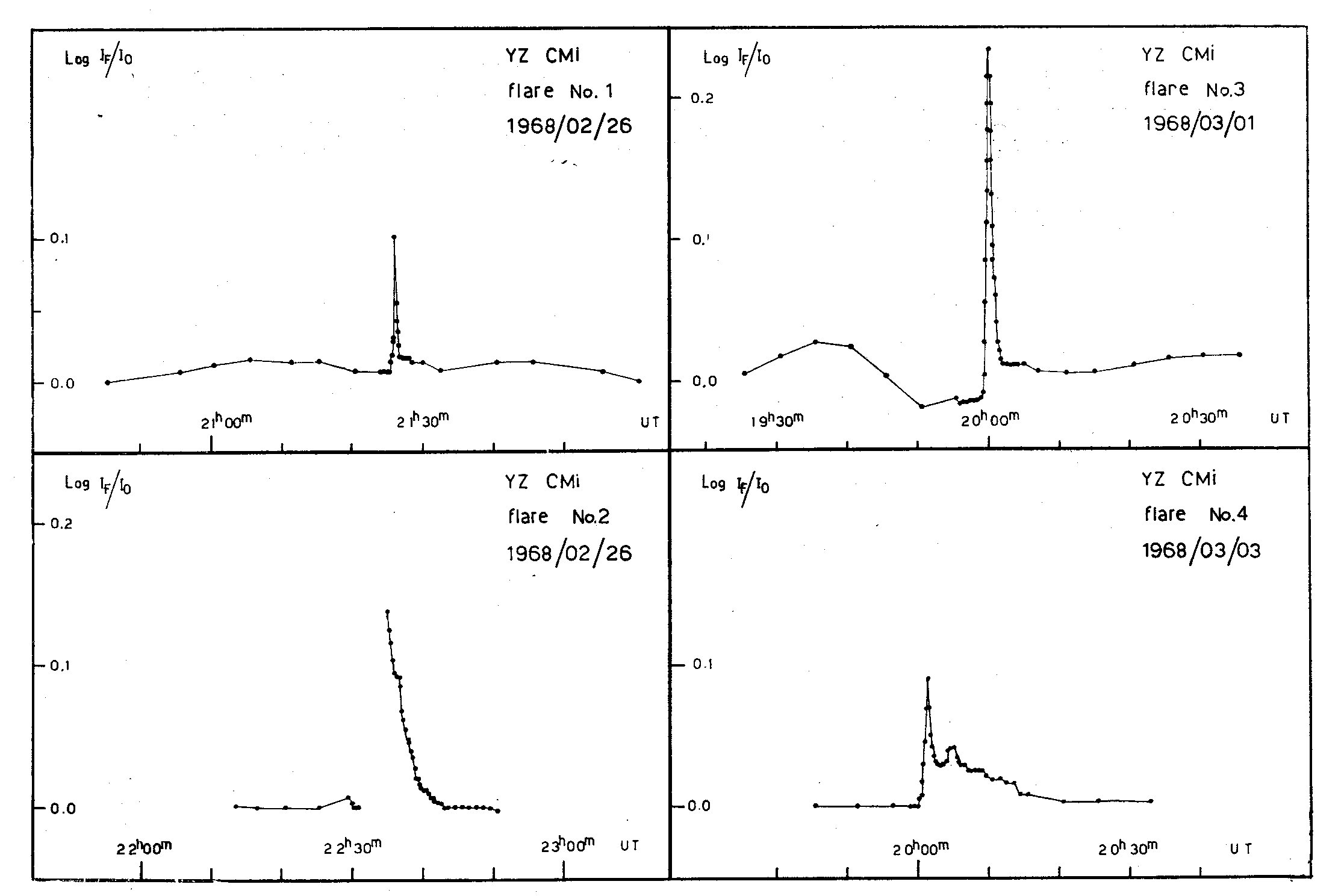 Fig. 1. Light curves of the four flares of YZ CMi observed at Catania.
Fig. 1. Light curves of the four flares of YZ CMi observed at Catania.
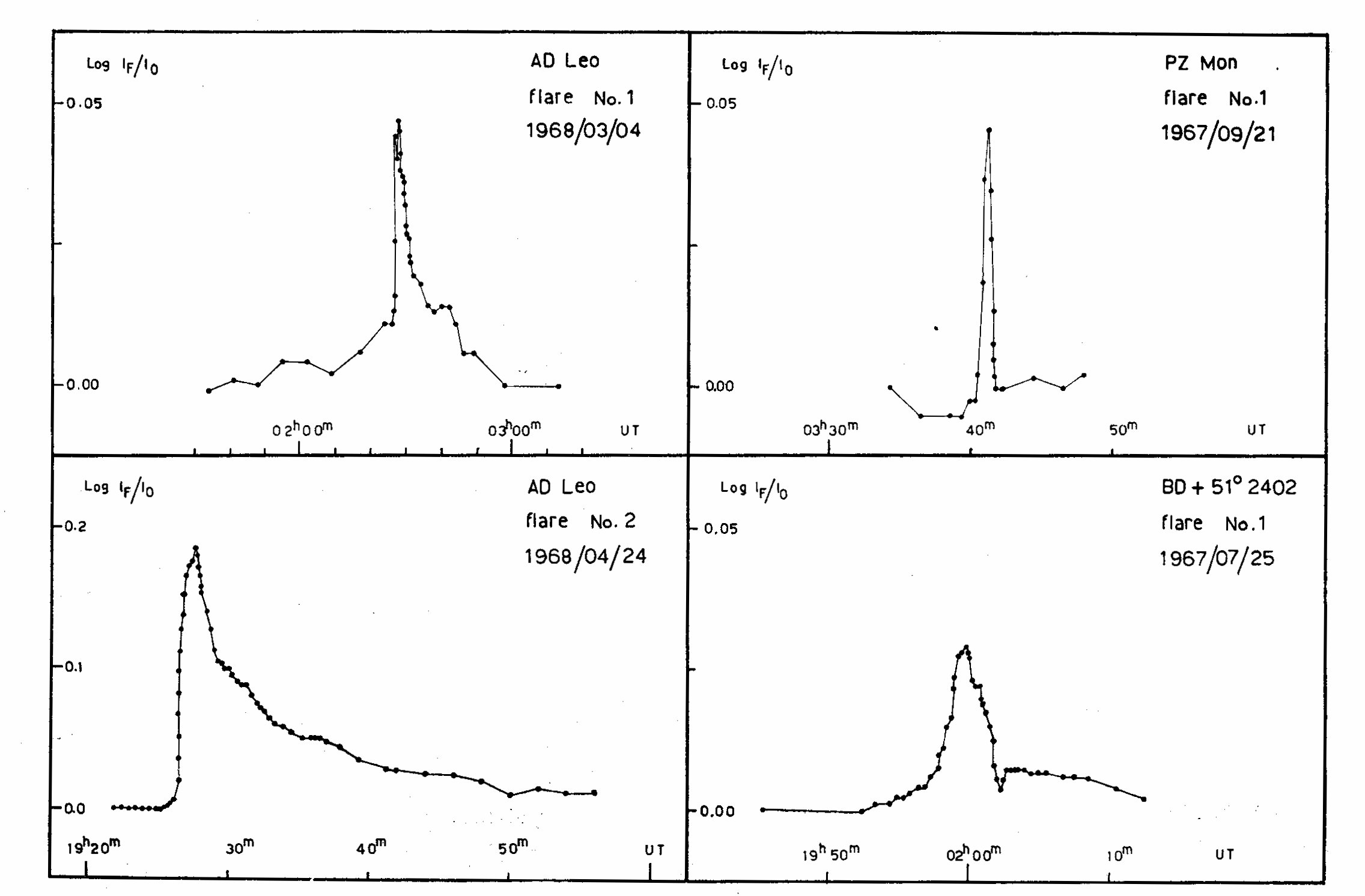 Fig. 2. Light curves for flares of AD Leo, PZ Mon, BD + 51 2402
observed at Catania.
Fig. 2. Light curves for flares of AD Leo, PZ Mon, BD + 51 2402
observed at Catania.
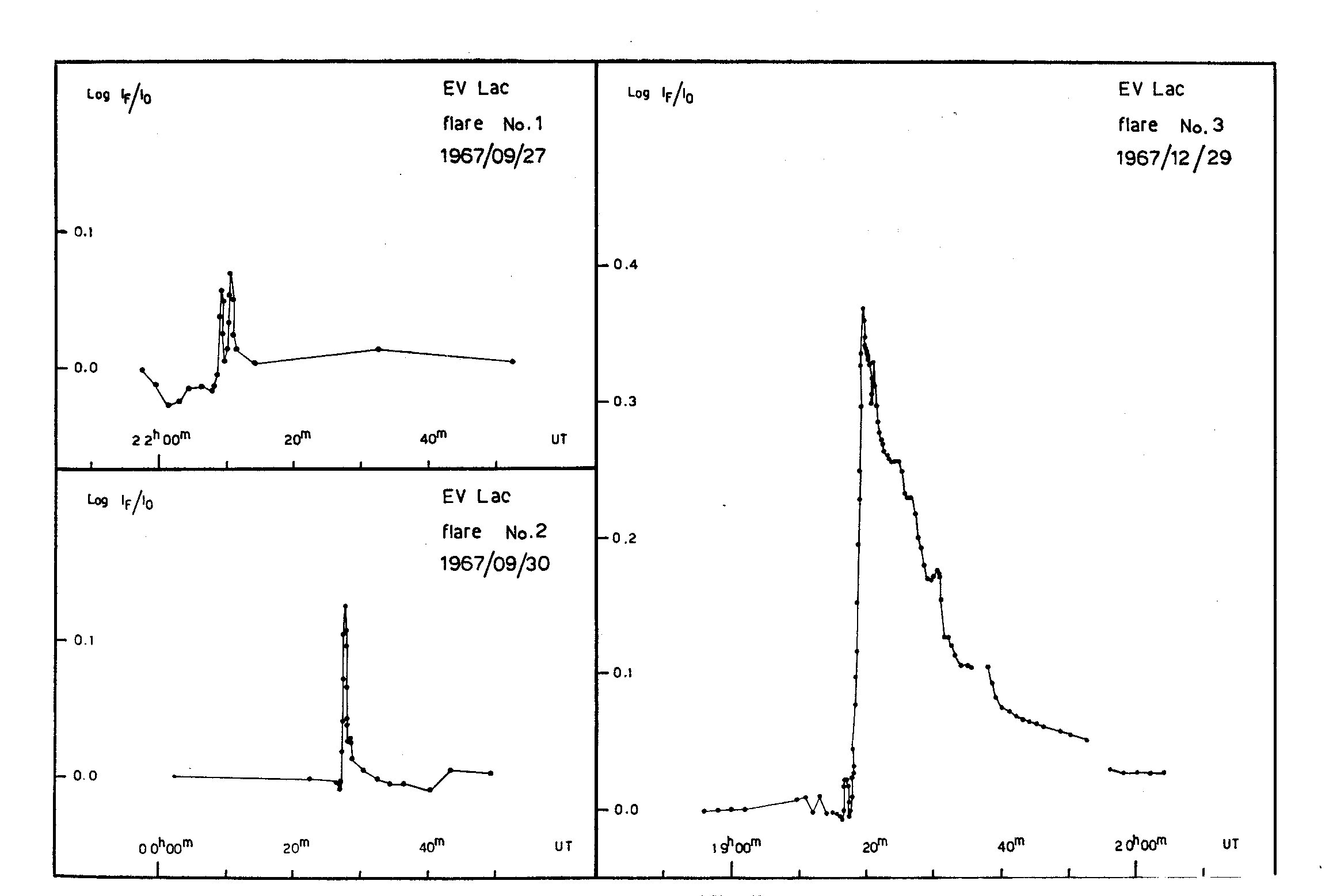 Fig. 3. Light curves for three flares of EV Lac observed at Catania.
Fig. 3. Light curves for three flares of EV Lac observed at Catania.
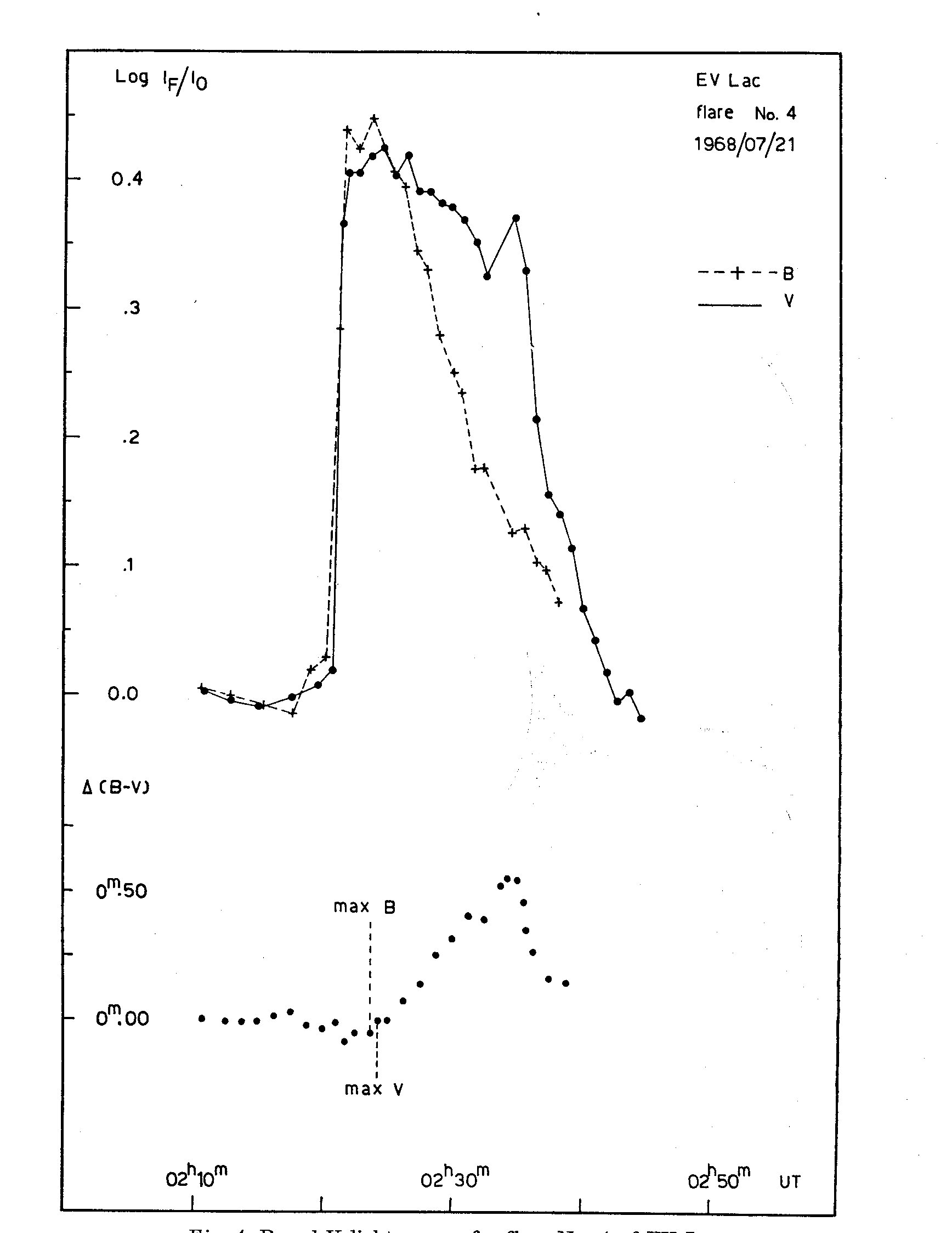 Fig. 4. B and V light curves for flare No. 4 of EV Lac.
Fig. 4. B and V light curves for flare No. 4 of EV Lac.
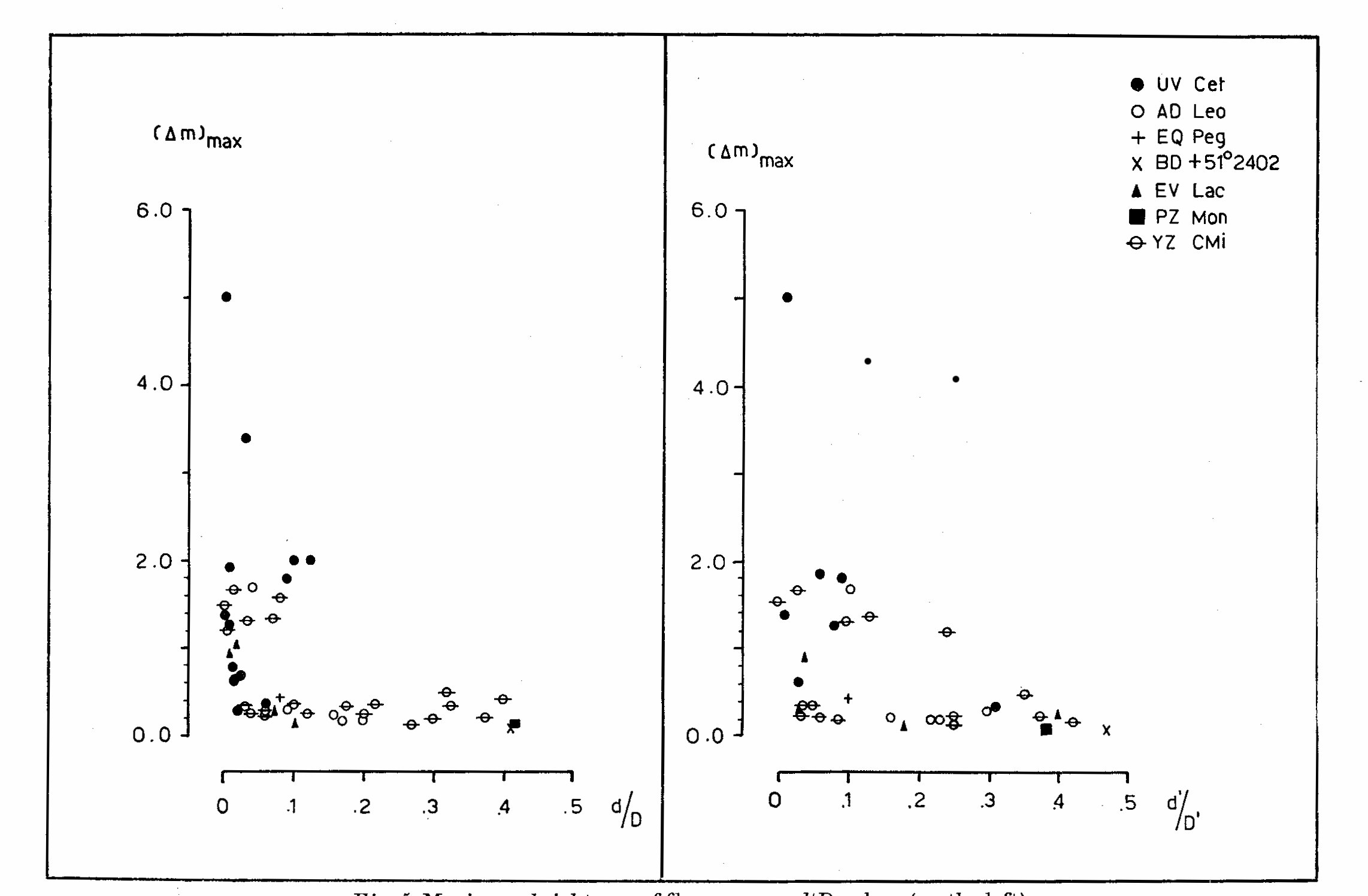 Fig. 5. Maximum brightness of flares versus d/D values (on the left).
Maximum brightness of flares versus d'/D' values (on the right).
Notes
1. The photoelectric data of each night are too numerous to be published
in this paper. The interested researchers may have a copy by request directly
from the authors.
2. The individual observations will be sent to the IAU Comm. 27 depository
of unpublished photoelectric observations of variable stars as recommended
in IAU Transactions XIII A, p. 510.
REFERENCES
Cristaldi, S., Paterno, L., 1968a, Mem. Soc. astr. ital., 39.
Cristaldi, S., Paterno, L., 1968b, These Proceedings.
Cristaldi, S., Rodono, M., 1968a, Comm. 27 of IAU, Inf. Bull. Var. Stars No. 252.(IBVS N°.252)
Cristaldi, S., Rodono, M., 1968b, Comm. 27 of IAU, Inf. Bull. Var. Stars No. 274.(IBVS N°.274)
Cristaldi, S., Narbone, M., Rodono, M., 1968, Mem. Soc. astr. ital., 39, 339.
Fracastoro, M. G., 1967, Oss. astrofis. Catania, Pubbl. No. 107.
Godoli, G., 1967, Oss. astrofis. Catania, Pubbl. No. 115.
Godoli, G., 1968, in "Mass Motion in Solar Flares and Related Phenomena" IX Nobel
Symposium, Anacapri.
COMMENT
Wood: I am much interested in the light fluctuations shown just before some
of the flares. In observing SX Phe - quite a different type of variable
but one which also shows a rapid increase of brightness - it was found
that on the one night quite similar fluctuations appeared just before
the increase. This was the only night observation made in this particular
region, and I have never known whether or not to believe that the
fluctuations were really in the star, although the observing conditions
were excellent. If flare stars show such changes preceding the outbursts,
it seems more likely that other stars showing sudden increases may do
the same. This suggests that in stars such as SX Phe, where the intervals
between maxima are predictable, observers should concentrate on the
interval just preceding the beginning of the rise to maximum.
Fig. 5. Maximum brightness of flares versus d/D values (on the left).
Maximum brightness of flares versus d'/D' values (on the right).
Notes
1. The photoelectric data of each night are too numerous to be published
in this paper. The interested researchers may have a copy by request directly
from the authors.
2. The individual observations will be sent to the IAU Comm. 27 depository
of unpublished photoelectric observations of variable stars as recommended
in IAU Transactions XIII A, p. 510.
REFERENCES
Cristaldi, S., Paterno, L., 1968a, Mem. Soc. astr. ital., 39.
Cristaldi, S., Paterno, L., 1968b, These Proceedings.
Cristaldi, S., Rodono, M., 1968a, Comm. 27 of IAU, Inf. Bull. Var. Stars No. 252.(IBVS N°.252)
Cristaldi, S., Rodono, M., 1968b, Comm. 27 of IAU, Inf. Bull. Var. Stars No. 274.(IBVS N°.274)
Cristaldi, S., Narbone, M., Rodono, M., 1968, Mem. Soc. astr. ital., 39, 339.
Fracastoro, M. G., 1967, Oss. astrofis. Catania, Pubbl. No. 107.
Godoli, G., 1967, Oss. astrofis. Catania, Pubbl. No. 115.
Godoli, G., 1968, in "Mass Motion in Solar Flares and Related Phenomena" IX Nobel
Symposium, Anacapri.
COMMENT
Wood: I am much interested in the light fluctuations shown just before some
of the flares. In observing SX Phe - quite a different type of variable
but one which also shows a rapid increase of brightness - it was found
that on the one night quite similar fluctuations appeared just before
the increase. This was the only night observation made in this particular
region, and I have never known whether or not to believe that the
fluctuations were really in the star, although the observing conditions
were excellent. If flare stars show such changes preceding the outbursts,
it seems more likely that other stars showing sudden increases may do
the same. This suggests that in stars such as SX Phe, where the intervals
between maxima are predictable, observers should concentrate on the
interval just preceding the beginning of the rise to maximum.
 Fig. 1. Light curves of the four flares of YZ CMi observed at Catania.
Fig. 1. Light curves of the four flares of YZ CMi observed at Catania.
 Fig. 2. Light curves for flares of AD Leo, PZ Mon, BD + 51 2402
observed at Catania.
Fig. 2. Light curves for flares of AD Leo, PZ Mon, BD + 51 2402
observed at Catania.
 Fig. 3. Light curves for three flares of EV Lac observed at Catania.
Fig. 3. Light curves for three flares of EV Lac observed at Catania.
 Fig. 4. B and V light curves for flare No. 4 of EV Lac.
Fig. 4. B and V light curves for flare No. 4 of EV Lac.
 Fig. 5. Maximum brightness of flares versus d/D values (on the left).
Maximum brightness of flares versus d'/D' values (on the right).
Notes
1. The photoelectric data of each night are too numerous to be published
in this paper. The interested researchers may have a copy by request directly
from the authors.
2. The individual observations will be sent to the IAU Comm. 27 depository
of unpublished photoelectric observations of variable stars as recommended
in IAU Transactions XIII A, p. 510.
REFERENCES
Cristaldi, S., Paterno, L., 1968a, Mem. Soc. astr. ital., 39.
Cristaldi, S., Paterno, L., 1968b, These Proceedings.
Cristaldi, S., Rodono, M., 1968a, Comm. 27 of IAU, Inf. Bull. Var. Stars No. 252.(IBVS N°.252)
Cristaldi, S., Rodono, M., 1968b, Comm. 27 of IAU, Inf. Bull. Var. Stars No. 274.(IBVS N°.274)
Cristaldi, S., Narbone, M., Rodono, M., 1968, Mem. Soc. astr. ital., 39, 339.
Fracastoro, M. G., 1967, Oss. astrofis. Catania, Pubbl. No. 107.
Godoli, G., 1967, Oss. astrofis. Catania, Pubbl. No. 115.
Godoli, G., 1968, in "Mass Motion in Solar Flares and Related Phenomena" IX Nobel
Symposium, Anacapri.
COMMENT
Wood: I am much interested in the light fluctuations shown just before some
of the flares. In observing SX Phe - quite a different type of variable
but one which also shows a rapid increase of brightness - it was found
that on the one night quite similar fluctuations appeared just before
the increase. This was the only night observation made in this particular
region, and I have never known whether or not to believe that the
fluctuations were really in the star, although the observing conditions
were excellent. If flare stars show such changes preceding the outbursts,
it seems more likely that other stars showing sudden increases may do
the same. This suggests that in stars such as SX Phe, where the intervals
between maxima are predictable, observers should concentrate on the
interval just preceding the beginning of the rise to maximum.
Fig. 5. Maximum brightness of flares versus d/D values (on the left).
Maximum brightness of flares versus d'/D' values (on the right).
Notes
1. The photoelectric data of each night are too numerous to be published
in this paper. The interested researchers may have a copy by request directly
from the authors.
2. The individual observations will be sent to the IAU Comm. 27 depository
of unpublished photoelectric observations of variable stars as recommended
in IAU Transactions XIII A, p. 510.
REFERENCES
Cristaldi, S., Paterno, L., 1968a, Mem. Soc. astr. ital., 39.
Cristaldi, S., Paterno, L., 1968b, These Proceedings.
Cristaldi, S., Rodono, M., 1968a, Comm. 27 of IAU, Inf. Bull. Var. Stars No. 252.(IBVS N°.252)
Cristaldi, S., Rodono, M., 1968b, Comm. 27 of IAU, Inf. Bull. Var. Stars No. 274.(IBVS N°.274)
Cristaldi, S., Narbone, M., Rodono, M., 1968, Mem. Soc. astr. ital., 39, 339.
Fracastoro, M. G., 1967, Oss. astrofis. Catania, Pubbl. No. 107.
Godoli, G., 1967, Oss. astrofis. Catania, Pubbl. No. 115.
Godoli, G., 1968, in "Mass Motion in Solar Flares and Related Phenomena" IX Nobel
Symposium, Anacapri.
COMMENT
Wood: I am much interested in the light fluctuations shown just before some
of the flares. In observing SX Phe - quite a different type of variable
but one which also shows a rapid increase of brightness - it was found
that on the one night quite similar fluctuations appeared just before
the increase. This was the only night observation made in this particular
region, and I have never known whether or not to believe that the
fluctuations were really in the star, although the observing conditions
were excellent. If flare stars show such changes preceding the outbursts,
it seems more likely that other stars showing sudden increases may do
the same. This suggests that in stars such as SX Phe, where the intervals
between maxima are predictable, observers should concentrate on the
interval just preceding the beginning of the rise to maximum.